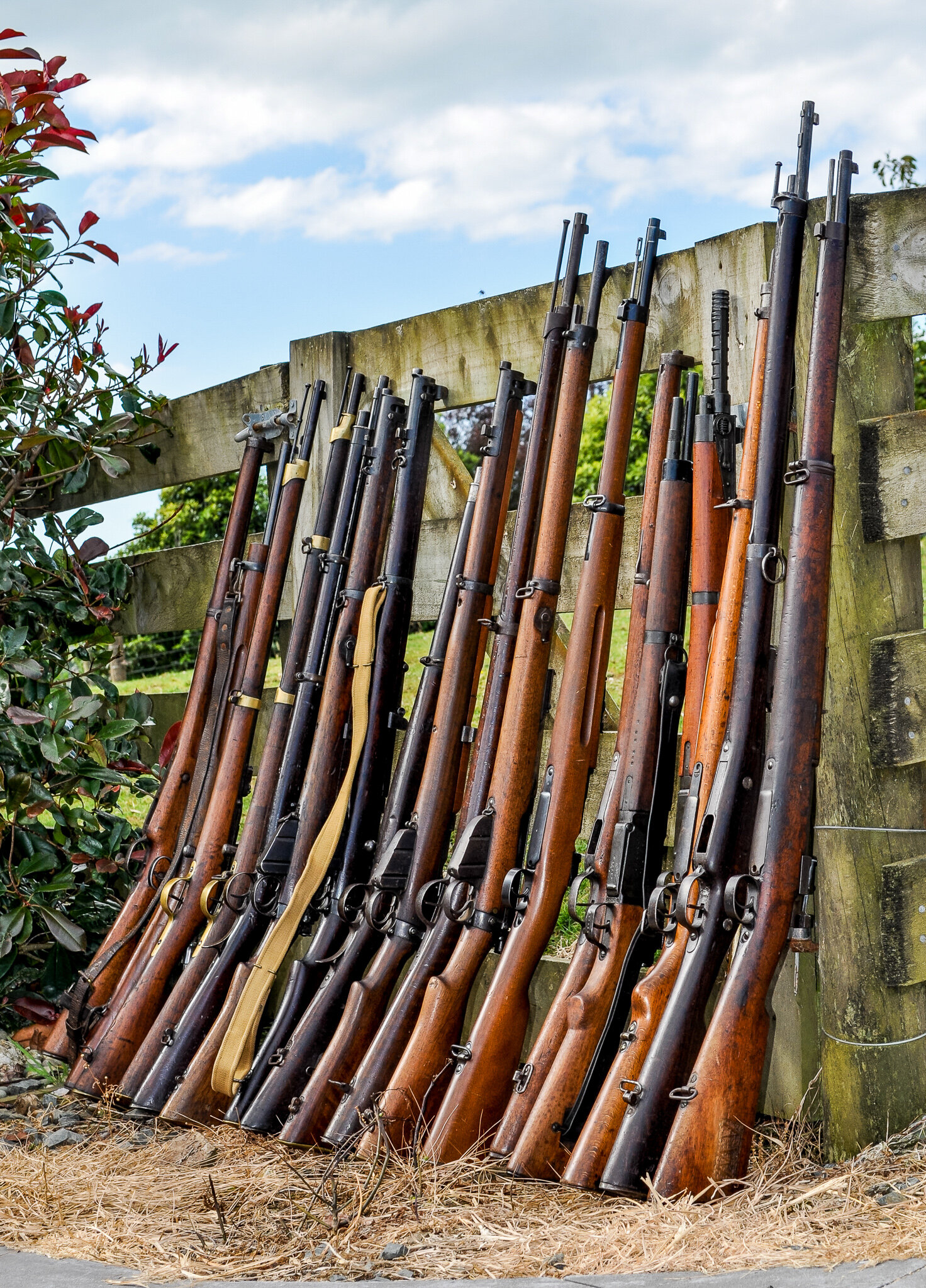
Collecting Military Surplus Rifles
German Mausers command a premium price if the rifles have matching numbers. The rifle pictured is a 1916 Gew98 Imperial Mauser from WW1.
The first firearm I bought after I got my New Zealand firearms license was a Chinese SKS made by Norinco. At the time they were legal to own on an A Cat license and were available in large numbers for around $300 NZD, these had the magazines limited to seven rounds and the bayonets were removed to stop them being categorised as a Military Style Semiautomatic and thus requiring an E category endorsement on your license. This rifle along with many others was crushed by NZ Police as required by the law change in 2019. Anyhow, this rifle started a long lasting obsession with surplussed military firearms that carries on to this day even with all the precision long range stuff I do. The fore mentioned terror attack and following bans on semiautomatic and various other firearms has had pushed a lot of collectors from semiautomatic firearms to milsurp bolt actions, this has seen the price of your average SMLE or Mauser skyrocket in price as the demand for these classic firearms has gone up significantly in the years following the ban.
So if your getting into collecting surplus rifles now, what should you do, where should you look and what should you buy?
First things first is do some research on what you want to buy, there are a huge amount of online sources but my picks would www.forgottenwepons.com and C&Arsenal, both have excellent websites and extensive YouTube channels. There is extensive information on a huge variety of military firearms on from both of these sources and the information is well researched and reliable.
Take time to learn the history of it, learn it’s quirks or potentially dangerous issues you may run into. Learn if you can find or make ammo form other cartridges and how to do that safely. There are plenty of cartridges from the early 20th century that have very similar dimensions and might potentially chamber in the wrong rifle. This can be catastrophic so it’s worth double checking everything and even doing a chamber cast if you are unsure of the caliber.
Another great resource here in NZ is the Antique and Historical Arms Association. This club has branch’s the length and width of New Zealand and is a great resource to learn from guys who have been collecting and studying these firearms for decades, plus they might even have a few good deals for sale at the monthly club nights or let you know know of rifles that are being put up for sale before they go on the open market.
Swiss rifles are a great option if you want a surplus rifle that shoots great, This K31 shot excellent out to 500 meters on steel targets.
Where should you buy?
Trademe is the most obvious place, a lot of nice firearms get auctioned of on here and you may even get a bargain if you keep your eyes pealed. The downside to buying online is that you can’t inspect the rifle in person before buying and take the risk of paying a premium and not being happy with what turns up.
Auctions. There are auctions run by www.militaria.co.nz based in Wellington and Sai Guns and Ammo in Auckland each year and several are organised by the Antique Arms Association each year at different locations around the country. This is a good place to find rare and interesting firearms and it includes pistols and automatics if you have the appropriate endorsements to own restricted firearms. You will be able to look over the firearms before you buy them and check the condition of the bore ect, but you are generally not allowed to fully disassemble the rifle.
Gun Shows, There are gun shows around NZ throughout the year and there are normally a few bargains to be had but you have to be quick to snap them up before other collectors who get there early thinking the same thing. So go the first day and arrive when the show opens to pick up the best deals. Prices at gun shows can vary but you can always haggle with the vendor and try save yourself a little bit of cash.
French rifles such as this French 1907/15 Berthier, French rifles are not as common here in NZ and have become quite collectable.
What should you buy? That’s 100% up to you and your budget but there are several things to look for to avoid getting a lemon.
Serial numbers. It can be common for surplussed firearms to have bolts that are numbered differently from the serial number on the receiver. This can happen for a number of reasons such as armoury repairs throughout its service life or soldiers losing parts or the rifle may have been priced together or ‘restored’ from a pile of different parts. Rifles are generally worth less with none matching numbers and can sometimes be purchased for a bargain if you get lucky.
Worn bores. It’s common to see rifles with poor condition bordes especially 303s, this is partly due to a century or so of use but more so due to poor maintenance by civilian owners post military service. The older berdan primed surplus ammunition had corrosive primers, when fired it left traces of salts throughout the action and inside the bore. This is not an issue if cleaned in a timely manner but if left it’s a very fast way to rust out a barrel and you will be left with very little in the way of rifling and even worse, potentially pitting inside the chamber, throat area.
Pitting. I have found pitting is more common beneath the stock on the receiver and around the chamber underneath the hand guards, it’s worth pulling these off to inspect if you can and check what’s going on. Pitting is not the end of the world if you only intend to collect the rifle, but if you want to fire it then pitting can significantly weaken the affected area of receiver or barrel and make the firearm potentially unsafe to fire. If in doubt get a gunsmith with experience in classic firearms to check over it before use.
Cracking and splits in the stock. It’s worth looking for cracks and old repairs in the stocks, some split form being to dry and other split for to much oil rotting out the wood around the tang. Repairs are done to varying degrees of quality and bring down the value of a gun significantly if its not repaired well
A nice matching numbers Long Lee Enfield, our troops took these to the Boer War and to the start of the Gallipoli campaign in 1915.
General wear and tear. Some rifles will be in pristine un issued condition or arsenal refurbished to near new, others will be rifles that have been picked up of the battle field and bought home by a veteran who just wanted a souvenir from the war. Some collectors prefer mint condition and others like the ‘used’ look, I personally think rifles that are worn and have seen combat are much cooler than one that sat in an armoury for 100 years and never got used. Again, this is a personal choice and up you when looking for the rifle you want. Rifles in brand new original condition normally demand a premium price so keep that in mind if you are new to the hobby, as you may be shocked how much they end up selling for.
What firearms to collect and in what condition is subjective to whatever it is you personally want or are happy to settle or not settle for. As mentioned above, do the research and see what peaks your interest. But most of all enjoy the hobby and hopefully you can learn a bit about these firearms that our ancestors carried in service and that saw so much horror in the 19th and 20th centuries.





